Product
Firmness
Score
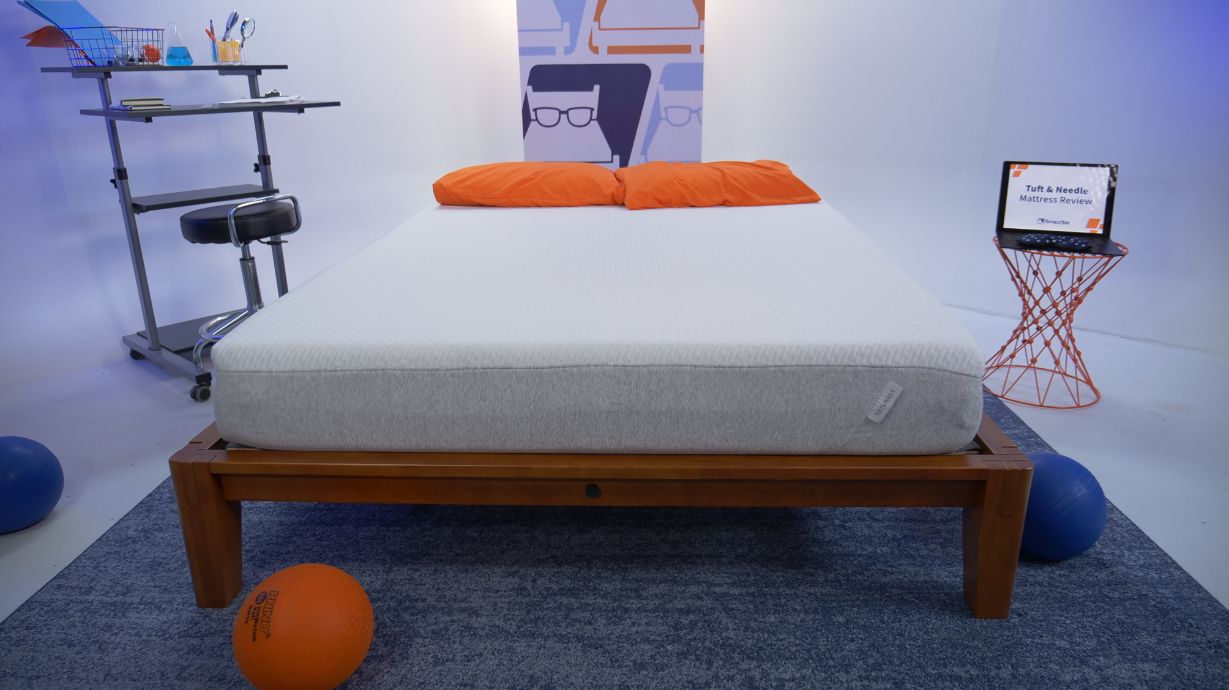
Disclosure: By clicking on the product links in this article, Mattress Nerd may receive a commission fee at no cost to you, the reader. Read full disclosure statement.
When it comes to mattress comparisons, two big contenders are the Tuft & Needle Original and original Purple mattresses. Both of these companies have changed the way we shop for new mattresses, but you might still be wondering which one is best for you.
Luckily, in this mattress comparison, we’ll go through everything you need to know about the two mattresses so you can pick out the one that’s right for your needs and preferences.
Want to know how we test and review our mattresses? Read up on our testing methodology.
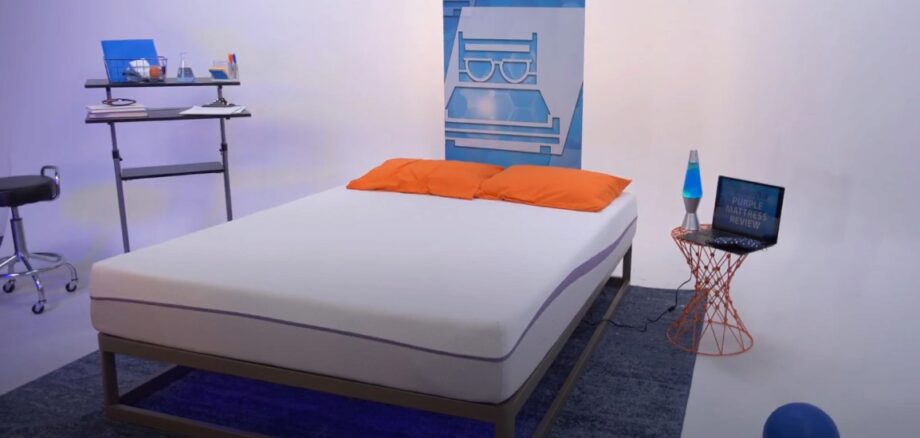

The flagship beds from Tuft & Needle and Purple are each stellar bed-in-a-box mattress picks with almost identical shipping, return, and warranty policies.
| Tuft & Needle is best for… | Purple is best for… |
| Lightweight and average-weight sleepers | Hot sleepers |
| Combination sleepers | Back sleepers |
| People on a budget | People with back pain |
Here are the biggest similarities and differences between the two popular mattress brands.
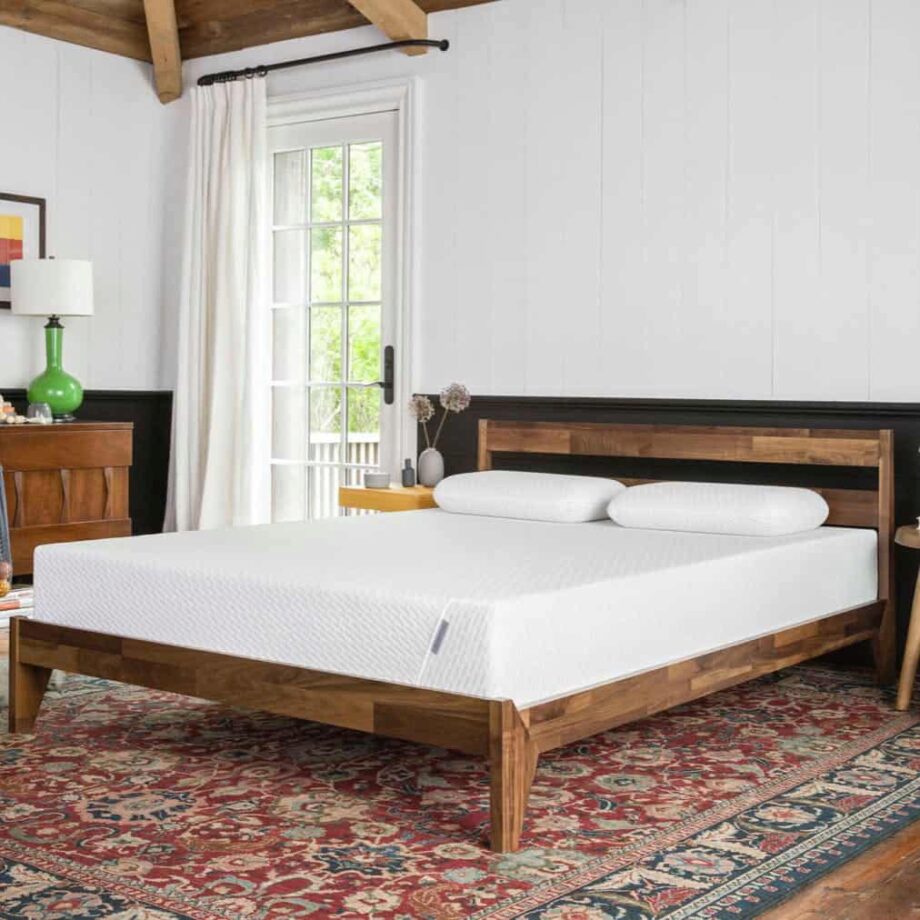
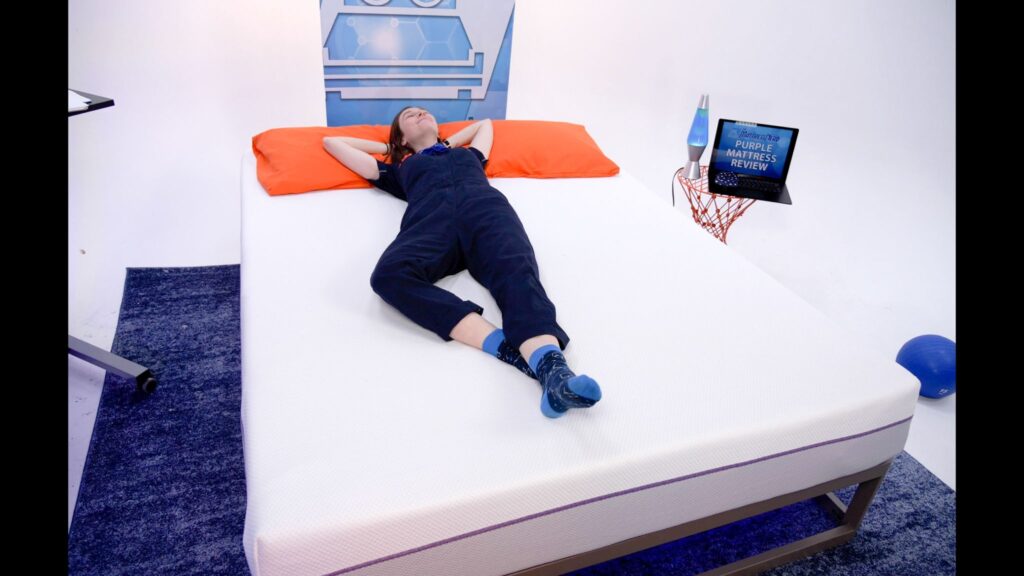
Here’s how the Tuft & Needle and Purple mattresses differ regarding mattress firmness level and feel.
We rate mattress firmness on a scale of 1 to 10, with 1 being extremely soft and 10 being extremely firm. Firmness is established by the materials used in the top comfort layer and the density of the layers in the mattress core.
While both the Purple (6.5/10) and the Tuft & Needle (6/10) rate medium-firm on the firmness scale, they both accommodate different types of sleepers with their materials.
Being an all-foam mattress, the Tuft & Needle provides a balanced foam feel that both cushions and conforms around your body. When lying down on it, there’s a slight sink that helps cradle your body, but not enough to the point where you feel like the mattress is “hugging” you. It feels like you’re sleeping “on” it rather than “in” it.
Purple provides a unique mattress feel like you’re “floating” on top of the mattress, thanks to its proprietary Smart Grid top layer. The gel top layer collapses under pressure to contour and conform around the body’s natural curves. But despite this, the top layer feels stable and even and sleeps cool because of the grid-like structure underneath.
The Tuft & Needle is firmer than most foam mattresses, making it suitable for all sleeping positions. Since it’s on the firmer side, it accommodates back and stomach sleepers more. Lightweight to average weight side sleepers may sleep comfortably on it, but some may feel like it’s too firm. Combination sleepers who toss and turn will like the fact that its foam layers can easily adjust to movement changes.
Similarly, the Purple mattress offers great support and body contouring for back and side sleepers. Its Smart Grid layer is also responsive to movement, making it a great choice for combination sleepers as well. However, the Purple struggles a bit when it comes to accommodating heavier folks as its top layer easily collapses under heavier pressure which may lead to excess sinking.
Tuft & Needle Performance By Body Type & Sleeping Position:
| Body Type: | BACK SLEEPERS | STOMACH SLEEPERS | SIDE SLEEPERS |
| Lightweight (< 130 lbs): | 4 | 4 | 2 |
| Average-weight (130–230 lbs): | 4 | 3 | 4 |
| Heavyweight (> 230 lbs): | 3 | 2 | 2 |
Purple Performance By Body Type & Sleeping Position:
| Body Type: | BACK SLEEPERS | STOMACH SLEEPERS | SIDE SLEEPERS |
| Lightweight (< 130 lbs): | 5 | 3 | 4 |
| Average-weight (130–230 lbs): | 5 | 2 | 3 |
| Heavyweight (> 230 lbs): | 3 | 1 | 3 |
Both mattresses will accommodate average weight back sleepers well, but the Purple slightly outperforms the Tuft & Needle because of its firmer and more supportive nature.
On the other hand, the Tuft & Needle mattress will probably be more comfortable for average weight side sleepers because of its softer yet supportive foam layers.
Average weight stomach sleepers will need enough support to keep their hips elevated and in healthy alignment with the spine, and Tuft & Needle’s firm foam layers do a better job than Purple’s Smart Grid.
The Tuft & Needle and Purple are both great for average weight combination sleepers, but the former has a medium-firm to medium feel that may feel a bit more comfy and responsive for combination sleepers who move around a lot.
Some heavyweight back sleepers will still sleep comfortably on either mattress, but some may feel like they won’t get enough back support. We recommend better options from our best mattresses for back sleepers list.
Heavyweight side sleepers will need great side support and pressure relief for a good night’s sleep. Both mattresses may struggle a bit in that regard, but the Purple probably offers better support than the Tuft & Needle.
Heavyweight stomach sleepers will find themselves sinking in too much on both mattresses, so we recommend going for firmer and more supportive options from our best mattresses for stomach sleepers.
Heavyweight combination sleepers should pick a mattress based on their dominant sleeping position. If you sleep on your back or side most of the time, the firmer Purple may be best. If you sleep on your stomach, we recommend getting firmer and more responsive mattresses.
Lightweight back sleepers will sleep comfortably on either mattress. However, Purple’s Smart Grid layer will probably offer better support and cushion for a healthy spine alignment.
Most lightweight side sleepers will appreciate the pressure-relieving and body-conforming Smart Grid layer of Purple more. Some may feel like the Tuft & Needle is too firm.
For lightweight stomach sleepers, the all-foam Tuft & Needle should provide enough support and elevation for your hips.
Both mattresses are great picks for lightweight combination sleepers. In this case, the choice is down to which mattress feel you prefer.
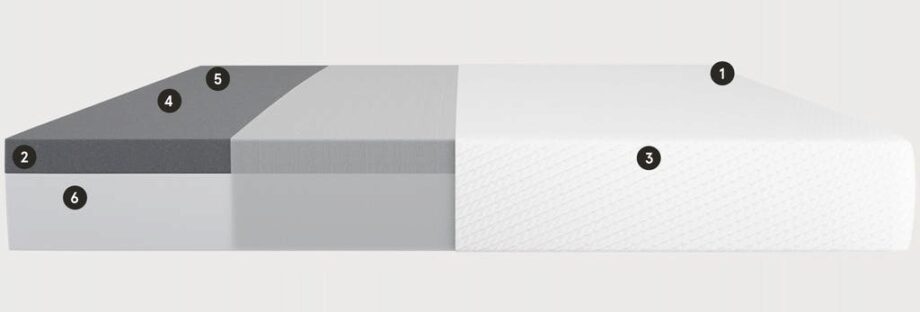
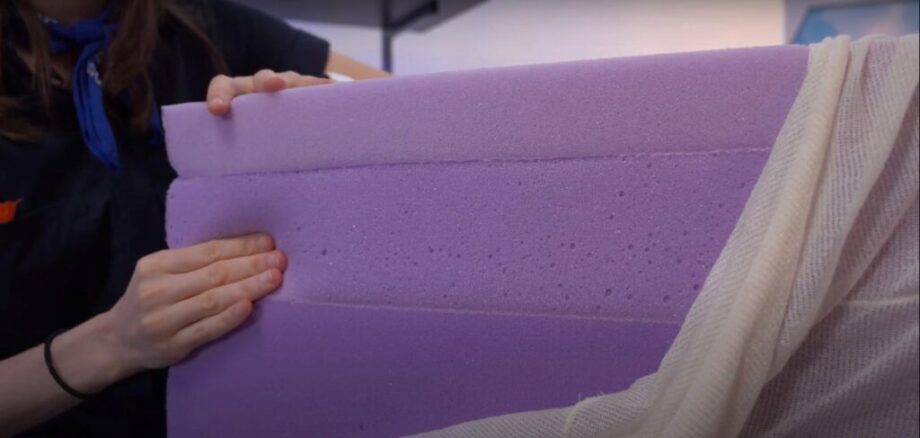
The Tuft & Needle is a 10″ all-foam mattress, while the Purple is a 9.5″ hybrid-foam mattress. Here’s a closer look at how each mattress is constructed.
| Tuft & Needle Mattress Materials | Purple Mattress Materials |
| Polyester Blend | Viscose, Polyester, & Lycra Blend Cover |
| 3” Adaptive Foam | 2” Purple Smart Grid |
| – | 3.5” Soft Polyfoam Transition Layer |
| 7” High-Density Support Foam | 4” High-Density Polyfoam Base + Non-Slip Bottom Cover |
Tuft & Needle uses a polyester blend cover that promotes breathability for a temperature-neutral sleeping experience. Purple’s cover is a blend of polyester, viscose, and Lycra, which results in a soft and flexible material that offers great temperature-regulating properties.
Tuft & Needle’s Adaptive Foam comfort system contains air pockets and ceramic gel beads that provide a cooling effect on the sleeper. Made from a Hyper-Elastic polymer gel material, Purple’s patented Smart Grid layer offers great pressure relief and support.
Both mattresses uses high-density foam base layers, but the Tuft & Needle is thicker at 7″ while the Purple stands at only 4″.
| Size | Tuft & Needle Prices | Purple Prices |
| Twin | $645.00 | $999.00 |
| Twin XL | $695.00 | $1099.00 |
| Full | $795.00 | $1399.00 |
| Queen | $895.00 | $1499.00 |
| King | $1295.00 | $1999.00 |
| California King | $1295.00 | $1999.00 |
For exclusive discounts on both beds see our Tuft & Needle mattress coupons and Purple mattress coupons.
The Purple’s unique grid allows it to channel airflow through the layer so that sleepers are kept cool and don’t have to worry about overheating while they rest. The Tuft & Needle mattress employs the use of ceramic cooling gel beads and graphite-infused foam, which wick away heat and moisture, keeping you relatively temperature neutral throughout the night as well.
However, we find that Purple’s grid circulates airflow better and may prevent heat from enveloping the sleeper. For more cooling options, see our list of the best cooling mattresses.
Motion isolation is an important factor for couples who share a bed, especially for light sleepers. Some mattresses are designed to minimize the impact of certain motions, also called motion transfer.
Tuft & Needle is better at isolating motion because Purple does have that bouncy Smart Grid over the foam layers. The Tuft & Needle features good motion isolation, meaning that you won’t have to worry about your partner waking you up in the middle of the night if they toss and turn or get out of bed. For other memory foam mattresses that isolate motion, check out our picks on the best mattress for couples.
Edge support matters for a variety of reasons. People who have trouble getting in or out of bed want a mattress that has proper support and won’t sag when sitting on the edge for too long.
Back and stomach sleepers also may need great edge support because they require better firmness to rest comfortably and use the whole bed. The Purple and the Tuft & Needle both have decent edge support, but you may experience some sinking if you sit on the edge of the bed for too long.
Pressure point relief is beneficial for all kinds of sleepers. This aspect is closely tied to the materials used in the comfort layer, which determine how well a mattress conforms to your body when you sleep.
The Purple distributes weight across the comfort grid, making it keeping you aligned and keeping back pain at bay. However, we did see a concentration of pressure in the hips and shoulders of side sleepers. Meanwhile, the Tuft & Needle mattress allows medium and smaller sleepers to experience similar pressure relief.
If you’ve ever woken up with body pain or aches, your mattress is a likely culprit.
A mattress’s pain-relieving ability is directly tied to how well it alleviates pressure. When pressure builds up in a certain area, that area tends to develop pain and aches.
All in all, both mattresses got similar scores when it came to pain relief. But when it came to alleviating back pain, the Purple performs slightly better than the Tuft & Needle. Side sleepers, on the other hand, may feel some pressure build-up around the hips and shoulders.
The Purple is designed to last approximately seven to 10 years, with recommended rotations every three to six months. The Tuft & Needle will last around six years of regular sleeping with the same rotation schedule. Purple is more durable because the gel-polymer layer stands up longer than the T&N foams.
Tuft & Needle offers free shipping, with extra fees on orders going to Alaska and Hawaii. They also provide a 100-day sleep trial period with free returns and a full refund and a 10-year warranty on all mattresses.
Purple offers free shipping across the contiguous U.S., with extra fees for orders going to Alaska, Hawaii, and Canada. They also offer a 100-day sleep trial and a 10-year warranty for each mattress, which covers material and workmanship defects.
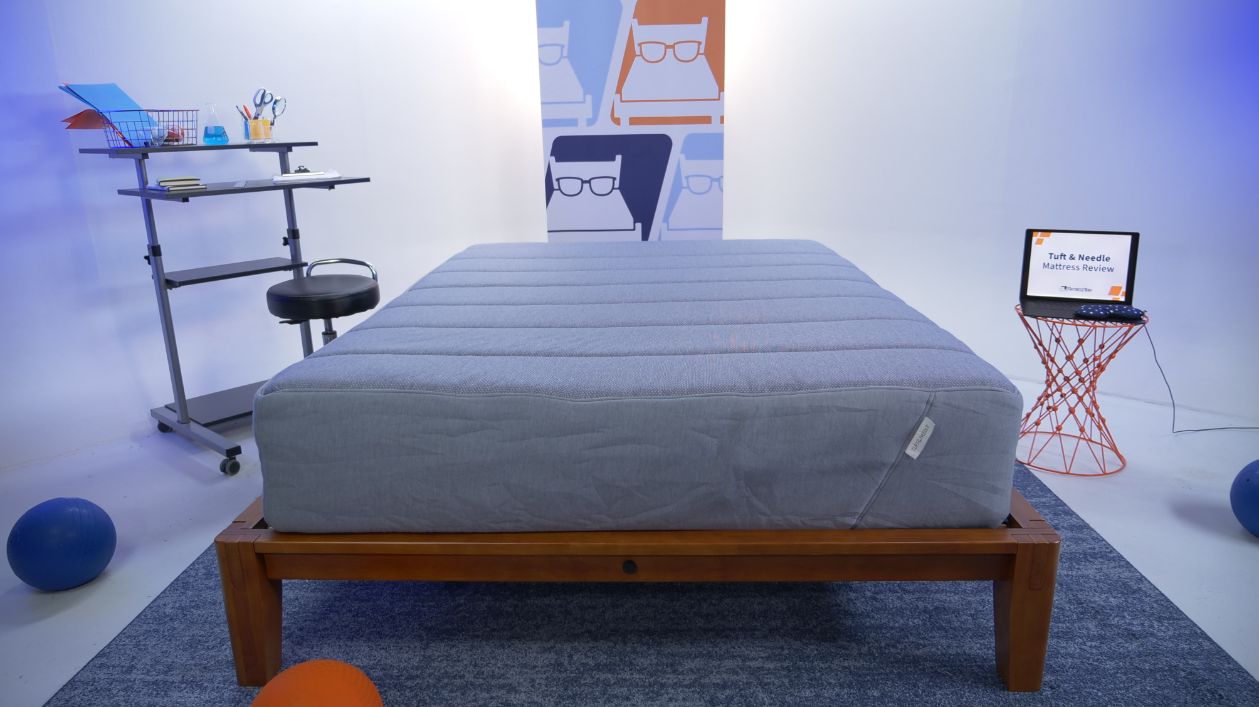
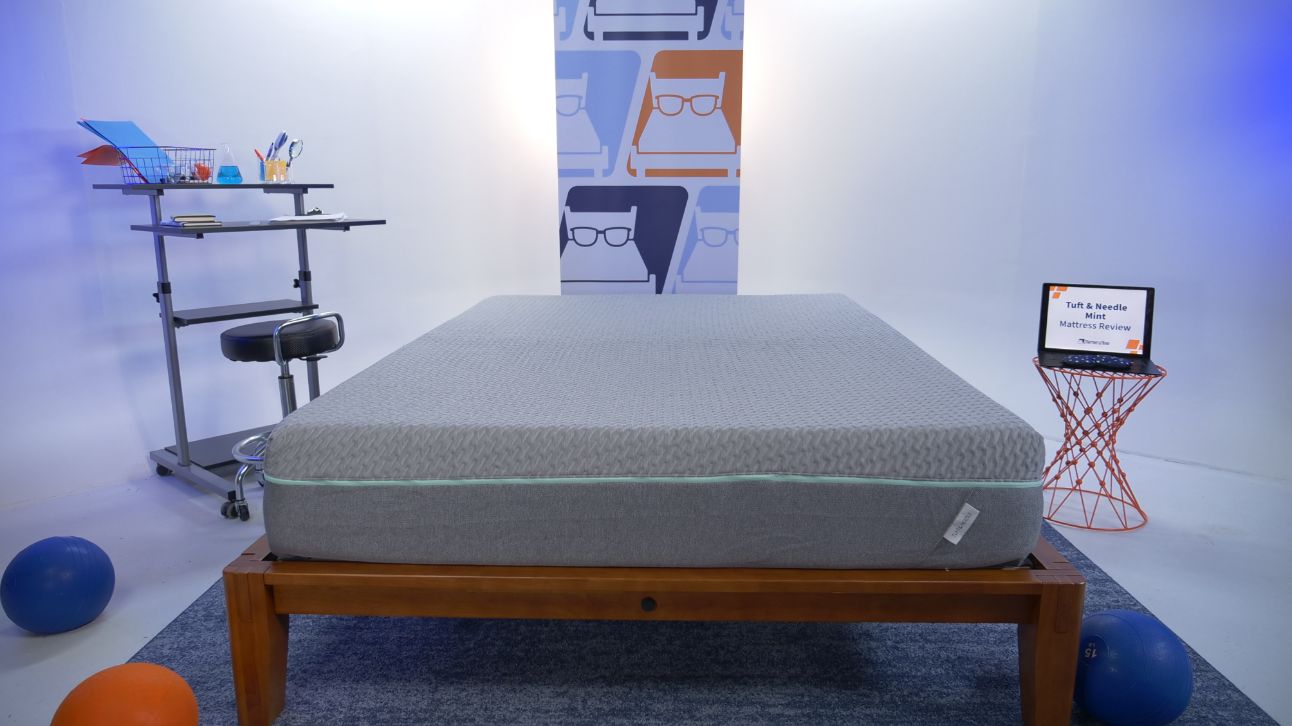
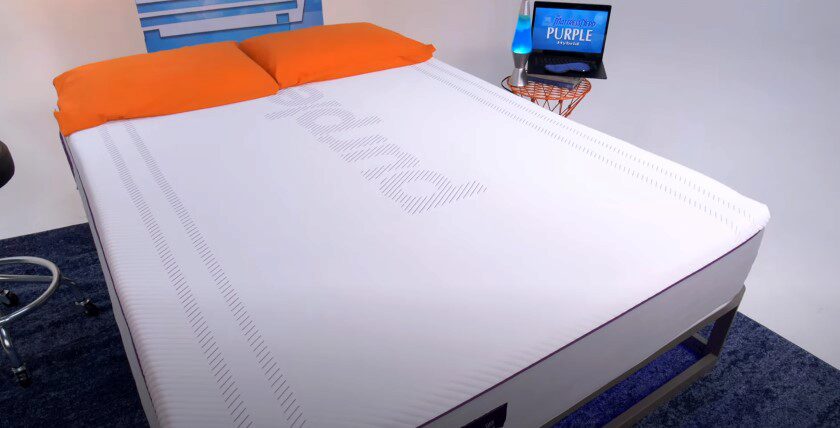
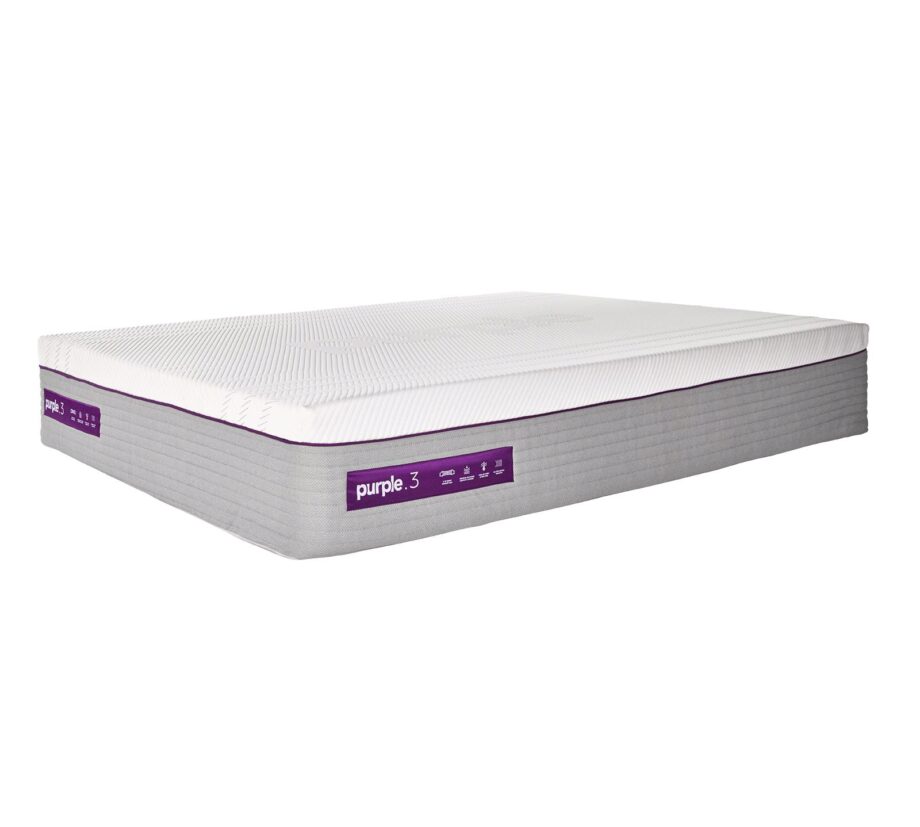
The Tuft & Needle and the Purple are both fantastic mattresses with several similar qualities, but depending on what kind of sleeper you are, it’s best to look at each aspect carefully to find your perfect fit.
If you are someone who sleeps in a variety of sleeping positions, have a petite or medium build, and want an option that is more budget-friendly, we recommend the Tuft & Needle mattress. If you don’t mind spending extra money for premium quality, and you are a back sleeper with problems keeping cool at night, the Purple may be the best option for you.
According to our firmness scale, the Tuft & Needle scores a 6/10, which puts it in the medium-firm category. This firmness level provides a good mix of comfort and support, making it a versatile mattress for all sleepers.
The Tuft & Needle is a budget-friendly all-foam mattress with two foam layers. Its top features are that it’s breathable, supportive, and comfortable.
Purple is a popular mattress brand for many reasons. However, like most brands, it’s not without any complaints. The most prominent complaints we’ve read about Purple mattresses are early sagging and indentations and poor customer service.